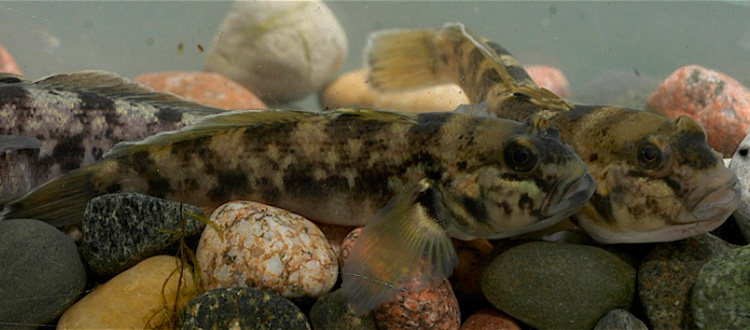In August 2012, the three foot high dam Wayne Road Dam on the lower branch of the Rouge in the City of Wayne was removed to allow fish passage. The lower branch splits from the main branch before the Henry Ford Estate Dam so is not impacted by it like all three other branches. The round goby (Neogobius melanstomus), an invasive fish from the Black and Caspian Seas was present in the lower Rouge but not above the dam in 2012. In 2013, FOTR partnered with Bob Muller, Philip Kukulski and UM-D faculty on a grant through the UM Water Center entitled Monitoring Fish Community Responses to Restoration Activities in the Rouge River Watershed. The timing of the study enabled researchers to track the upstream movement of the goby and its impact on the native fish community.
Twenty five sites were sampled on the Lower between May 2013 and August 2015. Forty species with 14,783 individual fish were sampled. Three species were found that had not been identified in the Lower branch before: northern logperch (Percina caprodes semifasciata), blacknose shiner (Notropis heterolepis) and blackside darter (Percina maculata). There were 1423 round goby equalling 11% of the total fish. In the first year (2013), round gobies were found 8.45 miles above the former dam in twelve months. The following year they were not found any further upstream. By August 2015, they had moved a total of 10 miles in 35 months. Johnny darters (Etheostoma nigrum) declined as the goby invaded. FOTR plans to continue to track the movement of the goby. Gobies had reached Sheldon Road in August 2015.
In 2015, round gobies were also identified in the middle Rouge. Since migration from the lower Rouge is prevented by the Henry Ford Estate Dam, it is suspected that these fish were brought in, most likely as bait. The findings are summarized in the Great Lakes Leveraging Grant Final Report.
Categories
-
Our WorkShort description about the category for context.
